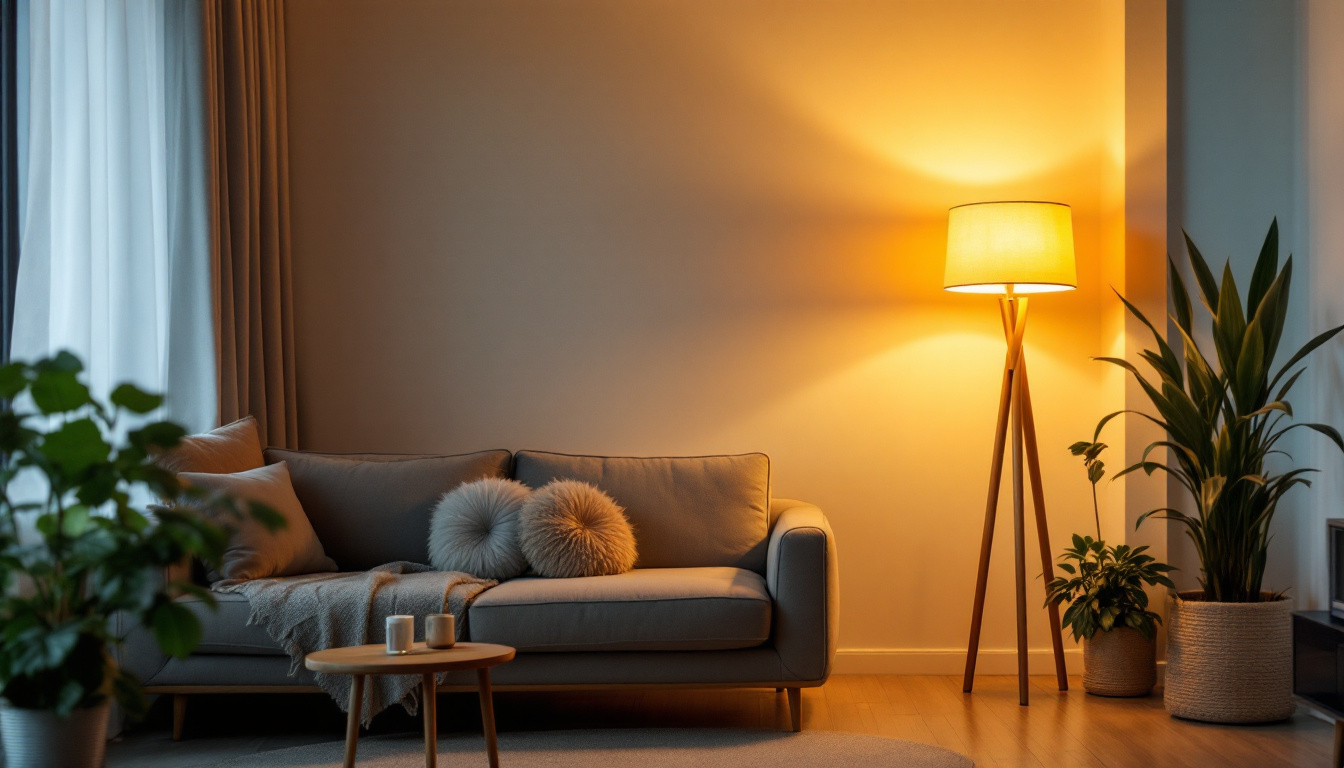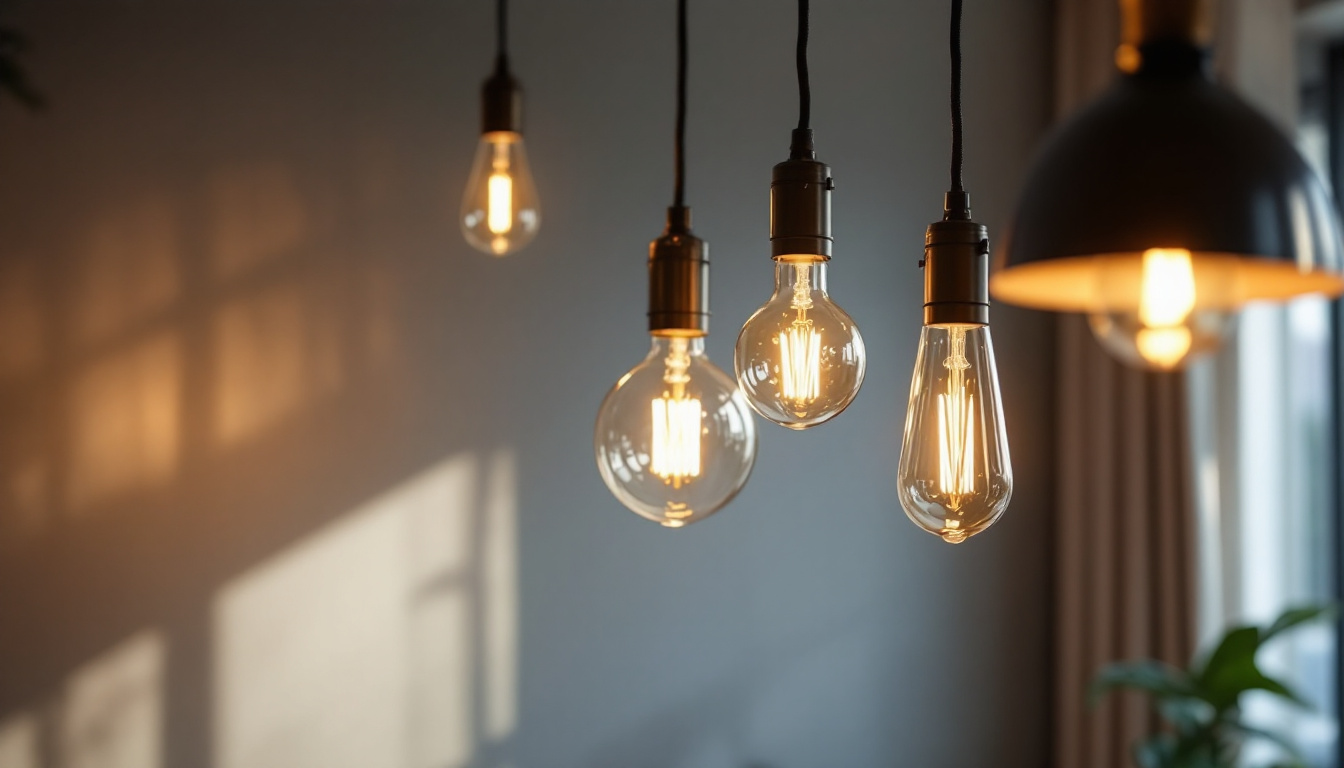
In the ever-evolving world of lighting, can lights—often referred to as recessed lights—have emerged as a popular choice for both residential and commercial spaces. Their sleek design and ability to provide ambient lighting without taking up visual space have made them a staple in modern architecture. This article explores the evolution of can light bulbs, examining their technological advancements, energy efficiency, and design versatility.
Recessed lighting has its roots in the desire for unobtrusive illumination. Initially, these fixtures were primarily used in commercial settings, where the need for bright, efficient lighting was paramount. The first iterations of can lights were simple metal housings that held incandescent bulbs, providing a focused beam of light.
As architects began to embrace open floor plans and minimalistic designs, the demand for recessed lighting grew. This shift marked the beginning of a new era in lighting design, where functionality met aesthetics. The compact nature of can lights allowed for creative freedom in interior design, enabling spaces to feel larger and more inviting. The ability to hide the light source while still achieving a bright and airy atmosphere became a game-changer for both residential and commercial spaces, allowing for a seamless integration of light into the architecture itself.
In the early days, can lights were limited by the technology of incandescent bulbs. These bulbs, while providing warm light, were inefficient and generated a significant amount of heat. This led to concerns about energy consumption and the safety of installations, especially in residential settings.
To address these issues, manufacturers began experimenting with different materials and designs. The introduction of thermal insulation and better heat dissipation techniques allowed can lights to be installed in insulated ceilings, expanding their application in homes. As a result, recessed lighting became more accessible to homeowners, paving the way for widespread adoption. Furthermore, the evolution of lighting technology saw the emergence of fluorescent and LED options, which not only reduced energy consumption but also offered a broader spectrum of color temperatures. This innovation allowed homeowners to customize the ambiance of their spaces, from warm and cozy to bright and invigorating, thus enhancing the overall aesthetic appeal of their interiors.
As environmental awareness grew, so did the demand for energy-efficient lighting solutions. The lighting industry responded with the introduction of compact fluorescent lamps (CFLs) and light-emitting diodes (LEDs) as alternatives to traditional incandescent bulbs. This shift not only reduced energy consumption but also extended the lifespan of light bulbs significantly.
LED technology, in particular, revolutionized the lighting industry. With their ability to produce bright light while consuming a fraction of the energy, LEDs quickly became the preferred choice for can lights. Their versatility allowed for various color temperatures, enabling homeowners and designers to create different moods and atmospheres within a space. The ability to dim LEDs also added another layer of customization, allowing users to adjust the brightness according to the time of day or specific activities, enhancing both functionality and comfort.
LED can lights offer numerous advantages over their incandescent predecessors. First and foremost, they are highly energy-efficient, using up to 80% less energy than traditional bulbs. This translates into lower electricity bills and a reduced carbon footprint. Moreover, the reduced heat output of LEDs means that they not only save energy but also contribute to a cooler environment, making them ideal for spaces where heat generation is a concern, such as kitchens or small rooms.
Additionally, LED bulbs have a longer lifespan, often lasting up to 25,000 hours or more. This longevity not only reduces the frequency of replacements but also minimizes waste, aligning with sustainable practices that many consumers are now prioritizing. Furthermore, many LED can lights are designed with advanced thermal management systems that enhance their performance and reliability, ensuring that they maintain their brightness and efficiency over time. With the added benefit of being free from hazardous materials like mercury, which is found in some CFLs, LED lights present a safer and more environmentally friendly option for both residential and commercial applications.
One of the most significant advantages of can lights is their design versatility. Available in various sizes, shapes, and finishes, these fixtures can seamlessly blend into any interior design scheme. Whether it’s a modern kitchen, a cozy living room, or a commercial space, can lights can be tailored to meet specific aesthetic requirements. For instance, sleek, matte black can lights can complement a contemporary industrial design, while polished chrome finishes can enhance a more traditional or classic look. This adaptability ensures that can lights not only serve a functional purpose but also contribute to the overall visual harmony of a space.
Moreover, advancements in technology have led to the development of adjustable and directional can lights. These fixtures allow for precise control over the direction of light, making them ideal for highlighting artwork, architectural features, or specific areas within a room. The ability to customize lighting has transformed the way spaces are perceived and utilized. For example, in a gallery setting, strategically placed can lights can draw attention to individual pieces, creating a dynamic viewing experience that changes as viewers move through the space. This flexibility in lighting design not only enhances the aesthetic appeal but also adds depth and dimension to interiors.
As smart home technology continues to gain traction, the integration of smart can lights has become increasingly popular. These fixtures can be controlled remotely via smartphones or voice-activated devices, allowing users to adjust brightness, color temperature, and even create lighting schedules. This level of control means that homeowners can easily transition from bright, energizing light during the day to softer, warmer tones in the evening, promoting relaxation and comfort. Additionally, many smart can lights offer compatibility with home automation systems, enabling users to integrate their lighting with other smart devices for a cohesive smart home experience.
The convenience of smart can lights enhances the user experience, providing an added layer of functionality. Homeowners can easily create the perfect ambiance for any occasion, whether it’s a cozy movie night or a lively gathering with friends. Furthermore, the energy efficiency of LED smart can lights not only reduces electricity costs but also contributes to a more sustainable lifestyle. With the ability to set timers and control lights remotely, users can ensure that lights are only on when needed, minimizing waste and promoting eco-friendly practices. This combination of convenience, efficiency, and aesthetic appeal makes smart can lights an attractive option for modern living spaces.
Despite the many benefits of can lights, there are challenges and considerations that lighting contractors must keep in mind. Proper installation is crucial to ensure optimal performance and safety. Inadequate insulation or improper placement can lead to issues such as overheating or insufficient lighting.
Furthermore, while LED technology has come a long way, not all LED bulbs are created equal. It is essential to choose high-quality products that provide consistent color temperature and brightness. This ensures that the lighting meets the desired aesthetic and functional requirements of the space.
When selecting can lights, understanding lumens and color temperature is vital. Lumens measure the amount of light emitted by a bulb, while color temperature, measured in Kelvin, determines the warmth or coolness of the light. A higher Kelvin value indicates cooler, bluish light, while a lower value represents warmer, yellowish light.
For residential spaces, a color temperature between 2700K and 3000K is often preferred for a warm, inviting atmosphere. In contrast, cooler temperatures around 4000K to 5000K are suitable for task-oriented areas like kitchens and offices. By selecting the appropriate lumens and color temperature, contractors can ensure that the lighting enhances the overall design and functionality of the space.
The future of can lights is bright, with ongoing advancements in technology and design. As the lighting industry continues to innovate, new features and functionalities are likely to emerge. For instance, the development of tunable white lighting allows users to adjust the color temperature throughout the day, mimicking natural light patterns.
Additionally, the integration of human-centric lighting—lighting designed to support well-being and productivity—will likely play a significant role in the evolution of can lights. This approach focuses on creating lighting that aligns with the body’s natural circadian rhythms, promoting health and comfort in residential and commercial environments.
Sustainability will remain a key focus in the lighting industry. As consumers become more environmentally conscious, the demand for eco-friendly lighting solutions will continue to rise. Manufacturers are likely to invest in sustainable materials and production processes, further reducing the environmental impact of can lights.
Moreover, the push for energy-efficient lighting solutions will drive innovation, leading to the development of even more advanced technologies. As a result, lighting contractors will need to stay informed about the latest trends and products to meet the evolving needs of their clients.
The evolution of can light bulbs has transformed the lighting industry, offering a blend of functionality, energy efficiency, and design versatility. From their humble beginnings as simple incandescent fixtures to the advanced LED options available today, can lights have become an essential element in modern lighting design.
As technology continues to advance, the future of can lights looks promising. With a focus on sustainability, smart integration, and human-centric design, these fixtures will continue to enhance spaces while meeting the demands of environmentally conscious consumers. For lighting contractors, staying abreast of these developments will be crucial in providing clients with innovative and effective lighting solutions.
As you embrace the future of can lights and seek to provide innovative and sustainable lighting solutions, turn to LumenWholesale for your needs. We offer a vast array of top-quality, spec-grade lighting products at unbeatable wholesale prices, tailored to the evolving demands of the lighting industry. Our commitment to cutting out the middleman means you get superior lighting without inflated markups, ensuring every project shines with reliability and high performance. Plus, with free shipping on bulk orders, you can stock up on premium lighting at the best value — without hidden fees or compromises. Elevate your lighting game and experience the perfect blend of quality, affordability, and convenience with LumenWholesale.

Discover the transformative power of home office lighting fixtures and their crucial role in creating an efficient workspace.

Discover the secrets to enhancing your home’s ambiance with our guide on optimizing floor lamps for maximum lighting efficiency.

Discover essential insights from lighting contractors with our quick tips on post lamps.

Discover expert tips and insights from lighting contractors on mastering the art of hanging lights in dining rooms.